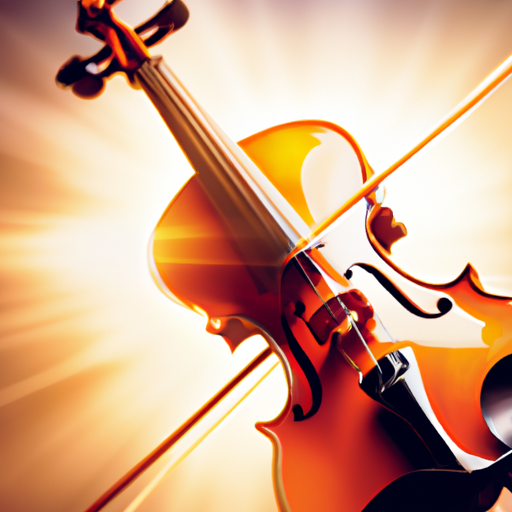
Are you interested in learning the violin? The violin is a beautiful and versatile instrument that has captivated audiences for centuries. Whether you have always dreamed of playing the violin or are just starting to explore your musical interests, this article will guide you through the basics of learning the violin, from choosing the right instrument to finding the right teacher.

Before you start your violin journey, it's important to choose the right instrument. There are different types of violins, including acoustic and electric. Acoustic violins produce a traditional sound, while electric violins allow for more versatility in terms of sound manipulation. Consider your musical preferences and goals when choosing the type of violin that suits you best.

Violins also come in various sizes, ranging from full size to smaller sizes suitable for children. It's crucial to select a violin that fits your body size and arm length. A violin that is too big or too small can hinder your progress and technique. Consulting with a knowledgeable violin dealer or teacher can help you find the perfect fit.
Understanding the anatomy of a violin is essential for beginners. A violin consists of several key components, including the body, neck, fingerboard, bridge, soundholes, and strings. Each part plays a crucial role in producing the beautiful sound that the violin is known for.
The body of the violin is typically made of wood, which contributes to its resonance and timbre. The strings are stretched across the body and are responsible for creating the sound when played. The fingerboard is where you press the strings to produce different pitches and notes. The bridge transfers the vibrations from the strings to the body, amplifying the sound.
Learning the correct bow and finger positioning is crucial for producing a good sound on the violin. Holding the bow correctly allows for better control and tone production. The thumb and pinky finger play a significant role in maintaining balance and control while bowing. The fingers of the left hand should be curved and placed correctly on the fingerboard to produce accurate pitches and notes.
Posture and hand positioning are equally important when playing the violin. Maintaining a good posture helps to prevent fatigue and discomfort while playing. The shoulder rest and chin rest aid in supporting the violin and keeping it stable. Developing proper hand positioning and posture from the beginning will prevent bad habits and potential injuries in the long run.
Once you have mastered the basics of holding and positioning the violin, it's time to learn some basic techniques. The bow is used to create different bowing styles, such as staccato, legato, and spiccato. Learning how to apply pressure and control the speed of the bow will help you produce a variety of tones and dynamics.
Understanding basic notes and how to read sheet music is fundamental for any musician. Learning how to read music notation will allow you to play melodies and songs written for the violin. Familiarize yourself with the staff, treble clef, note values, and musical symbols commonly used in violin music.
Tuning your violin is essential for producing a pleasant sound. A poorly tuned violin will not only sound off-key but can also affect your ear training and musical development. Learning how to tune your violin using a tuner or tuning fork will ensure that you are always playing in tune. Regular tuning sessions will become a routine part of your violin practice.
Understanding basic music theory will greatly enhance your violin playing. Familiarize yourself with the fundamentals of music notation, including reading sheet music, understanding key signatures, and interpreting dynamics and articulations. Developing a strong foundation in music theory will make learning new pieces and playing with others much easier.
Practicing specific exercises designed for beginners will help you develop the necessary skills and techniques to play the violin. Finger exercises will strengthen your fingers and improve dexterity for playing different notes and scales. Bow exercises will help you control the bow and produce consistent and even tones. Ear training exercises will enhance your ability to recognize pitches and play in tune.
Having the guidance of a skilled and experienced violin teacher is invaluable, especially for beginners. A good teacher will provide personalized instruction, correct any bad habits, and motivate you to progress. When looking for a violin teacher, consider their qualifications, teaching style, and experience. Ask for recommendations from other musicians and schedule trial lessons to find the teacher that best suits your learning style.
Learning to play the violin is a rewarding and fulfilling journey. It requires dedication, patience, and consistent practice. The violin offers numerous benefits, including improved coordination, cognitive development, and the joy of creating beautiful music. As you continue on your violin journey, remember to stay motivated, set achievable goals, and enjoy the process of learning and mastering this remarkable instrument.